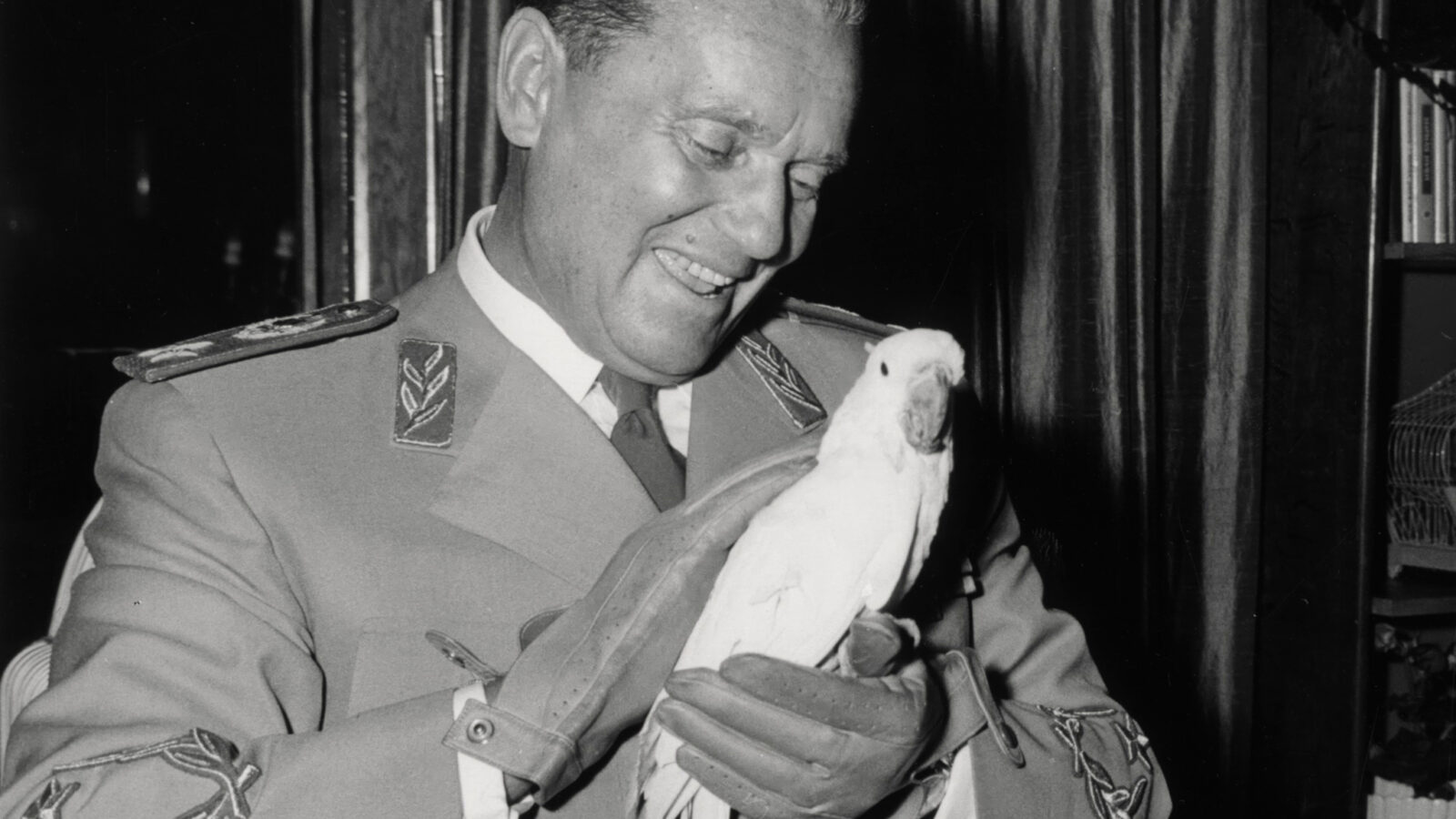The Parrot-Person in Koki, Ciao
Sentimentality Without Oversimplification
In Koki, Ciao, Quenton Miller depicts the autobiography of an immortal parrot, a loyal comrade of Marshal Tito, leader of Yugoslavia for 35 years. Saulė Augustinaitė explores how the cockatoo’s status correlates with Mary Midgley’s notes on “person” as a concept.

Abstract
Quenton Miller’s Koki, Ciao (2025) is a short documentary that features a parrot as a person. In this essay, I will explore how Koki the cockatoo’s status correlates with Mary Midgley’s notes on “person” as a concept. According to her, the most relevant feature of a person is the “sensibility, social and emotional complexity.” 11 Mary Midgley, “Is a Dolphin a Person?” in Utopias, Dolphins and Computers: Problems in Philosophical Plumbing (Abingdon: Taylor & Francis, 1996), 94. ↩︎ Midgley extended this beyond the man-animal binary, which I will examine in relation to Koki, to what extent he could be considered the film’s co-writer and protagonist.
Koki, Ciao may manifest some of the characteristics of sentimentality, yet it does not result in simplistic self-indulgence. It stands against the criticism levelled against sentimentalisation by philosophers such as Joseph Kupfer. To Kupfer, sentimentality is a vice because it “produces the passivity of inactivity by immersing us in our emotions.” 22 Joseph Kupfer, “The Sentimental Self,” Canadian Journal of Philosophy 26, no. 4 (1996): 555, https://doi.org/10.1080/00455091.1996.10717467. ↩︎ By focusing on the film’s style, I will argue that Koki, Ciao shows sensibility as a result of sentimentalisation. What is more, it does so without the oversimplicity often charged against sentimentality. The film’s sentimentalisation is multi-layered due to its fractured structure. Throughout the five tableaus of photography-based editing, the film’s formal strategies present Koki’s personality as temporarily discontinuous. It balances both anthropomorphism and human decentralisation, yet remains emotionally engaging. Hence, the referral to Koki as a “person” helps this essay foreground how the film carries sentimental weight without becoming overly simplistic.
To give an overview of the short film, Koki, Ciao centres a non-human figure as the protagonist and narrator. As a screenwriter, the cockatoo shapes the film’s flow with his voiceover in Croatian. Koki mainly talks about his past with Josip Broz Tito, the former leader of Yugoslavia, his ex-owner. Such a narrative corresponds with the photos shown to Koki, which also prompt the fast-paced, sharp cuts in editing. However, the archival pictures span decades, which makes Koki a 67-year-old parrot. The immortal cockatoo’s autobiography becomes ambiguous as his identity gets questioned. Nevertheless, the new footage shows Koki, or his impersonator, living in unfair conditions: caged in a zoo, lonely, and bothered by tourists. This way, the 11-minute-long documentary offers an emotional portrayal of the cockatoo. By incorporating historical archives, the film explores Koki’s identity and raises questions about animal rights.
This piece was written as part of Prof. Jinhee Choi’s class “Feeling Cinema” during Saulė Augustinaitė’s Film Studies MA at King’s College London. Koki, Ciao won the CUPRA Filmmaker Award at the Berlinale in 2025, given to “an unconventional directorial talent from the competition of the festival’s short film section”.
